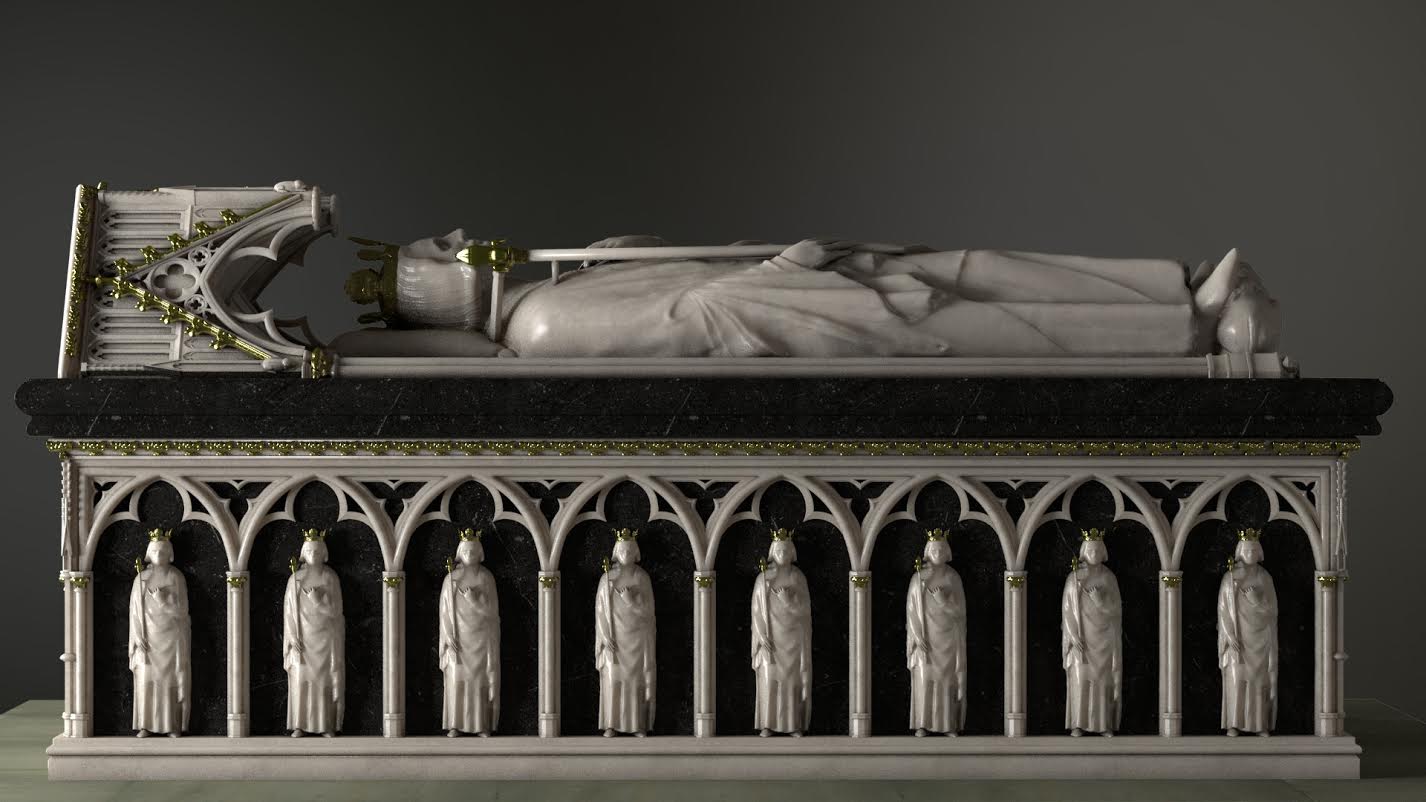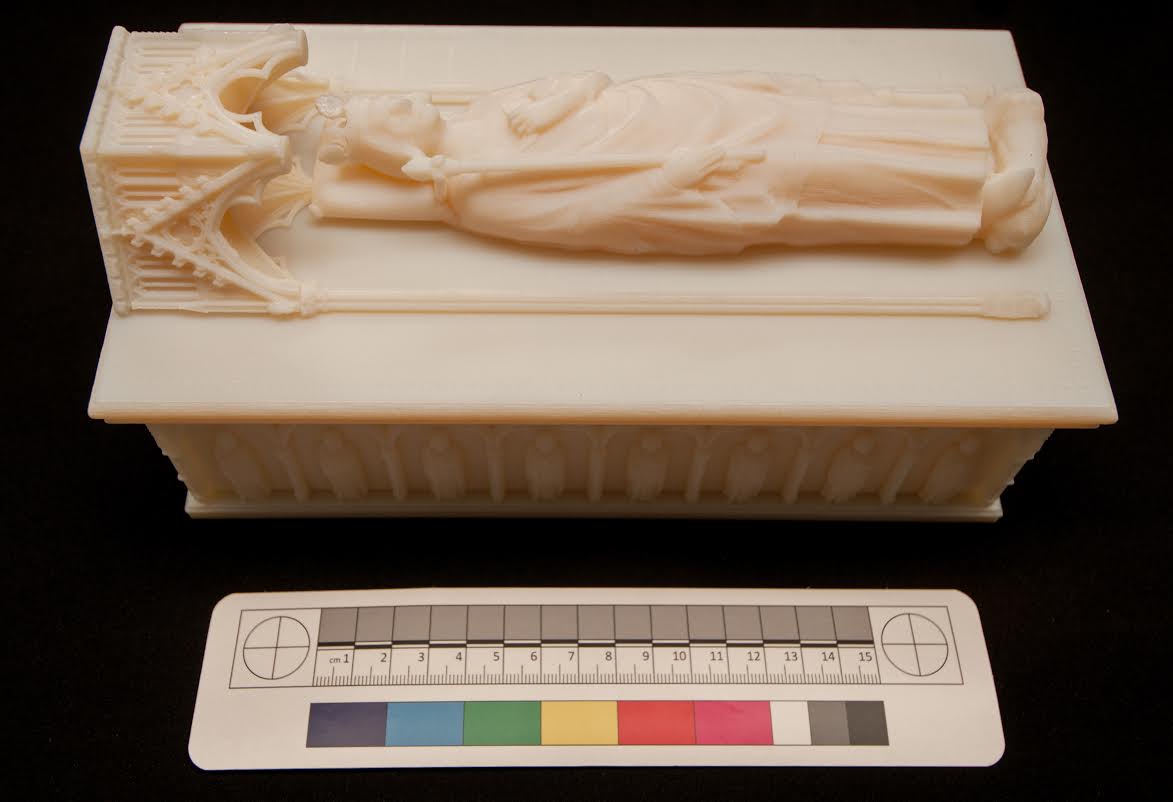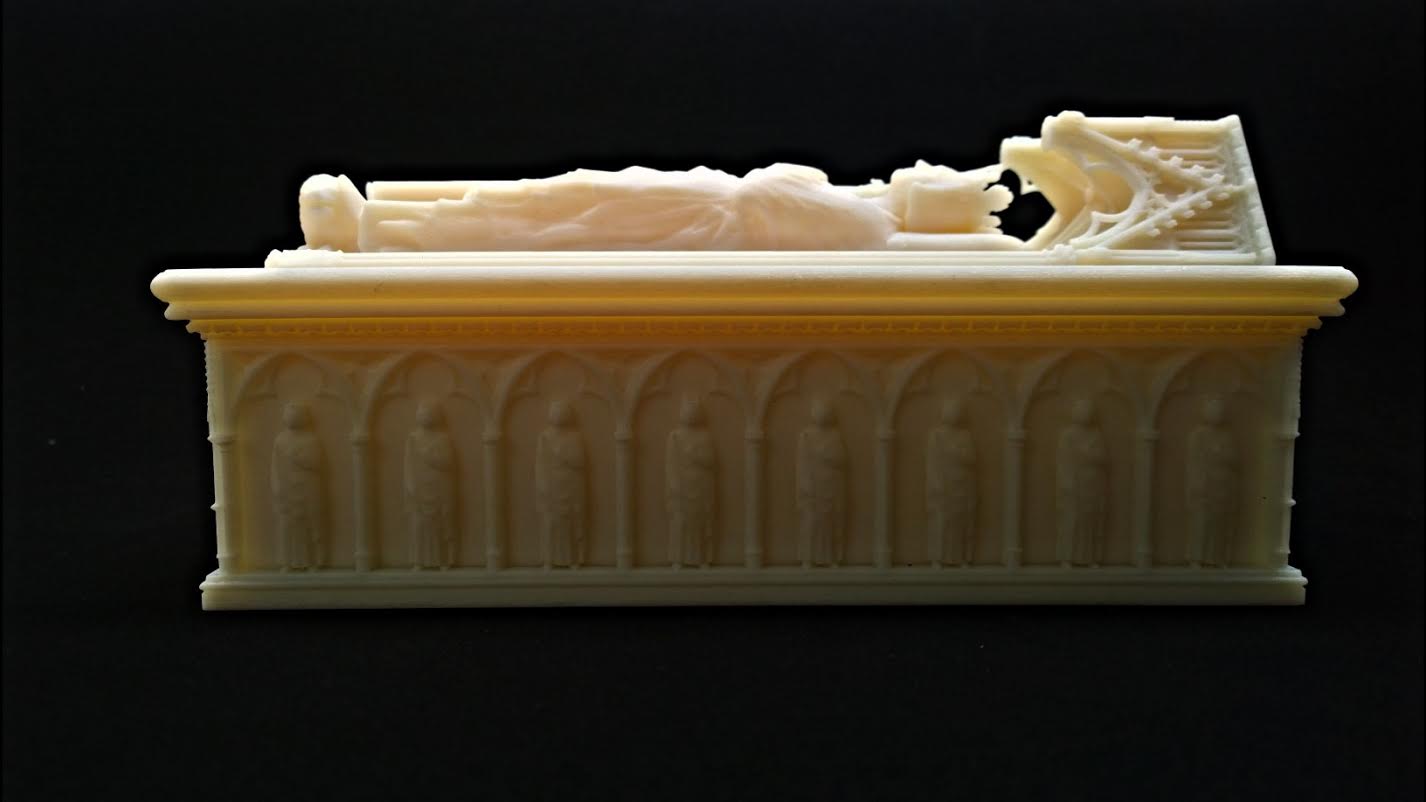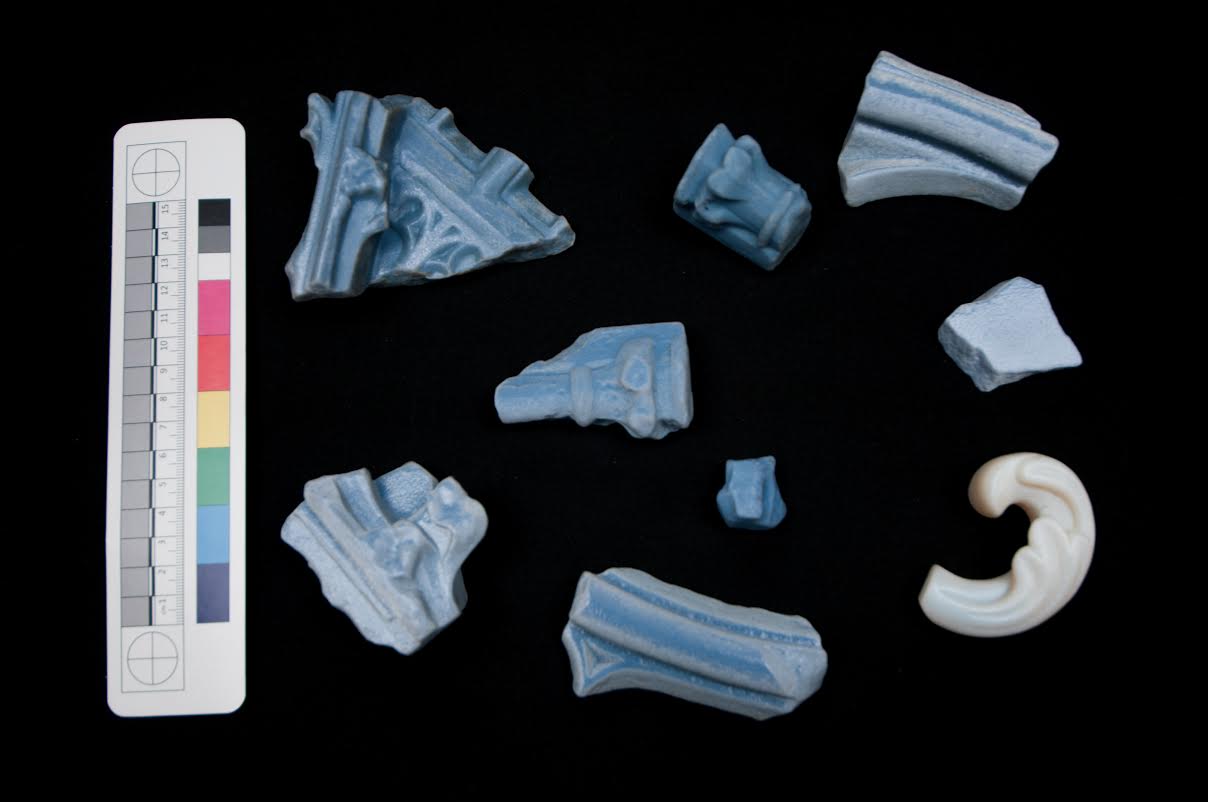
Virtual Reconstruction of the Tomb (c) The Centre for Digital Documentation and Visualisation LLP (a partnership between Historic Scotland and the Digital Design Studio at The Glasgow School of Art)
3D printing has been making its mark in museums and historical institutions over the past couple of years. We’ve seen it used to virtually ‘back up’ museum artifacts, hence allowing visitors of these exhibits to touch and feel precise replicas of valuable relics. The technology also has allowed schools and other organizations and individuals around the world to 3D print their own replicas for study, without having to actually visit a particular museum which may be thousands of miles away.
For representatives from Historic Scotland, in collaboration with colleagues at the Royal Commission for the Ancient and Historic Monuments of Scotland and the Digital Design Studio at The Glasgow School of Art, 3D printing allowed them to not only create a replica of a 685-year-old historic artifact, but it also allowed them to recreate something that has been lost.
This artifact was the tomb of the late King of Scotland, Robert the Bruce. Robert the Bruce reigned as king from 1306 until his death in 1326, at which time he was burried under an elaborate white marble tomb in Dunfermline Abbey. Unfortunately, for historical sake, this great tomb was destroyed over the years, although fragments still exist in museum collections at the National Museum of Scotland, the Hunterian Museum, Dunfermline Museum, and Abbotsford House. Using these fragments, researchers decided to reconstruct the famous tomb, and bring it back to life via 3D printing technology.
“The fragments were 3D scanned at very high resolution (0.1mm) using a Perceptron Romer v5 Arm scanner and a Konica-Minolta Vivid 9i scanner,” Dr. Lyn Wilson, Digital Documentation Manager at Historic Scotland, tells 3DPrint.com. “The point cloud data was processed into mesh form, and then re-processed as water-tight models to allow the fragments to be 3D printed at 1:1 scale on Historic Scotland’s [Stratasys] Objet30 Pro 3D Printer.”
These scans were then used to develop a full virtual reconstruction of the destroyed tomb, based on historical information as well as drawings from other comparative tombs. Then Historic Scotland and the Digital Design Studio segmented the reconstruction into nine separate parts in order to get it prepared for 3D printing. The 3D printable STL files were then imported into Stratasys’ Objet software and arranged on the virtual printer tray.
Once the individual pieces were all 3D printed, the team realized that after having removed the support material and cleaned the prints, several problems arose. Most notably there were parts on the prints that were too fragile and did not print out as well as the team had hoped.
Therefore it was back to the drawing board for Historic Scotland and Digital Design Studio. They had to make several modifications to the model, which according to Wilson, were as follows:
- Extruding back elements to make them more substantial
- Adding dowels
- Re-assembling the base for printing as one complete piece instead of separate components. This meant that we would have a cost effective clean model as a result (minimising joins and glue seepage)
- Joining the columns to the base which meant that we only had 3 components to consolidate rather than 9
“This meant that although changes were necessary; they had to be subtle,” Wilson tells us. “When the final adaptations were made to the files they were ready to print and assemble.”
The final print, as you can see in the photos provided, came out tremendously well, depicting what the original tomb most likely looked like. Historic Scotland now hopes to use the print in order to help better interpret the original tomb’s construction. At the same time, they hope to use it as a large focal point in a travelling exhibition on Robert the Bruce’s ‘Lost Tomb.’ It was once lost, but now it is found, thanks to 3D printing technology.
What do you think about this incredible use of 3D scanning and 3D printing technology to bring the lost tomb of Robert the Bruce back to life again? Discuss in the Robert the Bruce Tomb forum thread on 3DPB.com.
Subscribe to Our Email Newsletter
Stay up-to-date on all the latest news from the 3D printing industry and receive information and offers from third party vendors.
You May Also Like
Creality Begins Selling HALOT-MAGE S: Setting New Standards in Precision 3D Printing
Creality, a leading innovator in consumer-grade 3D printing technology, proudly introduces the HALOT-MAGE S, the latest breakthrough in high-resolution 3D printing. With its cutting-edge features and user-centric design, the HALOT-MAGE...
Farsoon Showcases Comprehensive 3D Printing Solutions, Automation, and More at TCT Asia
This year’s TCT Asia event showcased just how much the Asian additive manufacturing (AM) market has grown, with Eplus3D’s 64-laser metal 3D printer alone acting as a synecdoche for China’s...
Creality Launches Ender-3 V3 Plus: Bigger CoreXZ for Unprecedented Performance
Embracing a journey of innovation and excellence, Creality’s Ender-3 series has established a distinguished path in the field of 3D printing. From the entry-level Ender-3 V3 SE to the feature-rich...
Laser Wars: Eplus3D Unveils Metal 3D Printer with up to 64 Lasers
Now that the laser wars in the powder bed fusion (PBF) space have, for the most part, moved to China, original equipment manufacturers (OEMs) there are in fierce competition. Eplus3D...





































